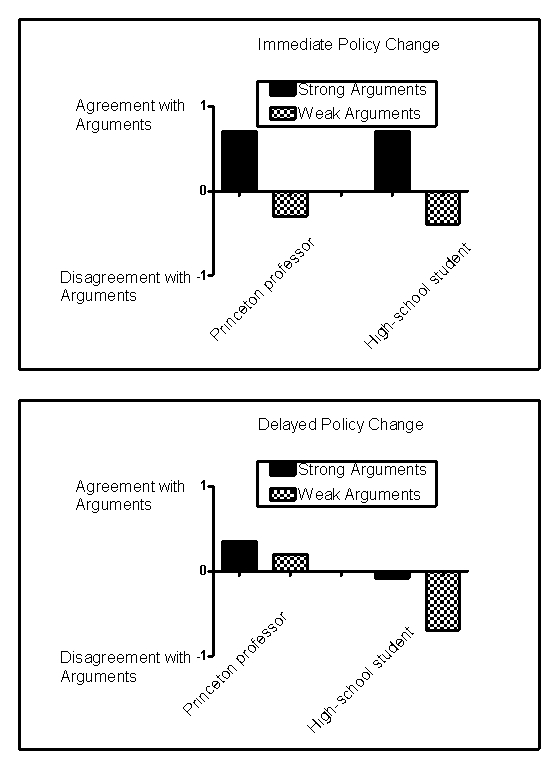Use the following to answer questions :
Scenario II
The scenario contains fabricated results consistent with the following study:
Petty,R.E. ,Cacioppo,J.T. ,& Goldman,R.(1981) .Personal involvement as a determinant of argument-based persuasion.Journal of Personality and Social Psychology,41,847-855.
Every day,consumers are exposed to scientifically based sales,marketing,and public relations strategies designed to influence purchasing decisions,change opinions,or win votes.One common sales strategy is the foot-in-the-door technique,a method that involves first making a smaller request that consumers are likely to grant and then following it with a larger request.Another common strategy is the door-in-the-face technique,which involves making an unreasonably large request that consumers will reject and then following it with a smaller request.When persuasion is necessary,it usually takes one of two forms: heuristic persuasion,which involves an appeal to habits or emotion,and systematic persuasion,which involves an appeal to facts and reason.Often,people will rely more on heuristics-simple shortcuts or "rules of thumb"-to make decisions instead of systematically weighing the evidence.
Petty and colleagues (1981) investigated some of these techniques in university students listening to arguments in favour of their university requiring an institution-level comprehensive final examination for graduation.Some students were led to believe that,if adopted,this policy would take place right away,and some were led to believe that the change would take place in a decade.In addition,some of the students were led to believe that they were listening to an argument from a Princeton professor,and others were led to believe that they were listening to an argument from a high school student.Finally,some students heard strong arguments in favour of the policy,and some heard weak arguments.Thus,the experiment arranged six groups of students.For example,one group of students heard strong arguments from a high school student about a far-removed policy change.Figure 13.1 shows fabricated results illustrating the major findings of this experiment.
Figure 13.1 
-(Scenario II) The results shown in Figure 13.1 suggest that university students were heuristically persuaded when the:
Definitions:
Antagonist
Antagonist is a term used in various contexts to denote a force or character that opposes someone or something else, or in pharmacology, a substance that inhibits or blocks physiological actions.
Resting Potential
The electrical potential of a neuron when it is not actively transmitting a signal, serving as the baseline state of the neuron.
Negatively Charged
Refers to an object or particle that has more electrons than protons, giving it an excess of negative electric charge.
Right Hemisphere
Refers to the right half of the human brain, which is often associated with spatial abilities, face recognition, visual imagery, and processing music.
Q53: Which computational procedure sorts traits into a
Q64: Some effects of placebos are due to
Q82: Children tend to exhibit only three of
Q158: A specific trait related to hardiness does
Q175: Today,many factor-analysis researchers agree that personality is
Q223: To measure a person's personality,a psychologist MOST
Q266: Upon his retirement,Charles is slightly more likely
Q278: The enduring piece of knowledge about an
Q280: Conscientiousness is a feature of the Type
Q285: Which factor is NOT a component of